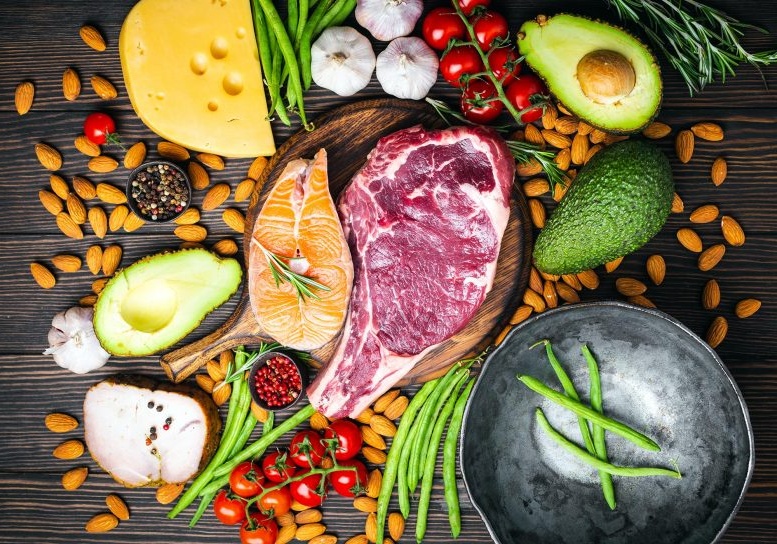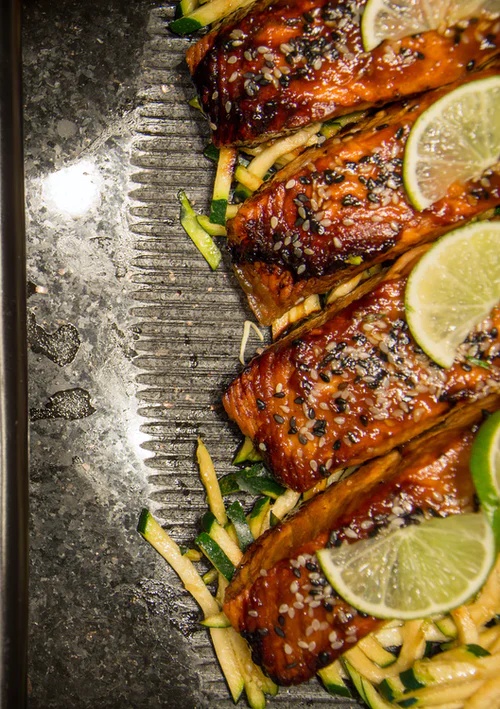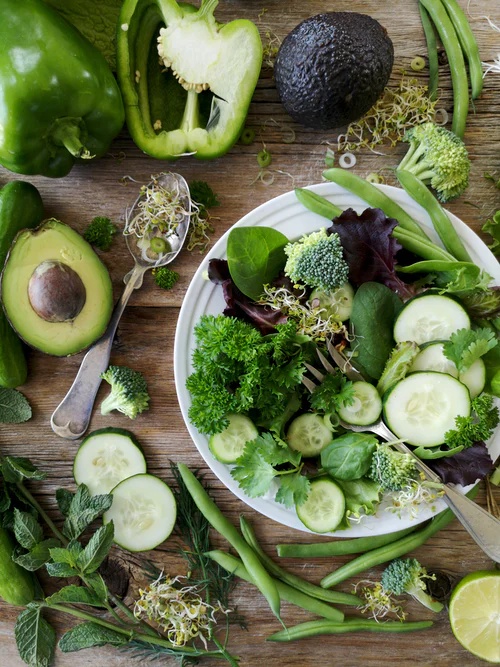List of Foods to Eat and Avoid for Ketogenic Diets
It is not widely known that ketogenic ('keto') style diets have existed since the 1920s. The high-fat and low-carbohydrate diet showed promise in helping reduce seizures in pediatric patients with epilepsy. Today the keto diet is promoted for weight loss. Many people were introduced to the “keto” or “ketogenic” diet via the Aitkin diet methods. The low-carb diet phenomenon, began in the 1970s with the Atkins diet (a high-protein diet, very low-carbohydrate diet which was a popular and quite successful). This diet introduced many people to the use of keto sticks to measure ketone levels in the urine.
Today, many other low-carbohydrate diets are popular including the Dukan, Paleo, and South Beach Diets. All of these diets are high in protein, but low to moderate in fat. In contrast, the keto or ketogenic diet stands out for its every high-fat content, typically 60% to 80% fat, combined with relatively moderate levels of protein in most versions. However, there are many variants of the ketogenic diet and foods allowed and disallowed. This article aims to clarify which foods are 'in-and-out' for keto diets.

How The Keto Diet Works
The principle for using the ketogenic diet for weight loss is that if you deprive the body of glucose by restricting carbohydrates in the diet the body switches to an alternative fuel called ketones, produced from stored fat. Hence, this is the derivation of the term “keto”-genic. When fasting, starving or doing extreme exercise, or when very little carbohydrates is consumed, the body initially draws on glucose reserves such as glycogen stored in the liver. The body also temporarily breaks down muscle and muscle glycogen to release glucose. After about 3-5 days of carbohydrate depletion, the glucose reserves are fully depleted. The levels of insulin in the blood decrease dramatically, and in response to this hormone, the body switches to using fat as its primary source of fuel for its energy needs. The liver starts producing more and more ketone bodies from fat, which the body uses to fuel its metabolism in the absence of glucose.
The accumulation of ketone bodies in the blood is called 'ketosis'. Healthy people experience a mild and natural ketosis during periods of fasting (including overnight fasting while sleeping) and after very strenuous exercise. Proponents of the ketogenic diet contend that if the diet is carefully followed, the levels of ketones in the blood should not reach dangerous level (known as “ketoacidosis”). This occurs in individuals with type 1 diabetes because they do not produce insulin. There is little evidence of ketoacidosis being cause by a normal ketogenic diet.
It should be noted that can get the benefits of ketosis and weight loss while eating a varied and balanced Mediterranean-Diet by undertaking intermittent fasting and reducing food consumption. One example is to 'not eat lunch' and to focus on eating whole foods. This method includes intermittent fasting and calorie intake reduction by about 30%.

Tips for Getting into Ketosis
There are a several ways you can use to get into nutritional ketosis safely and effectively.
- Cutting down on carbs - Reduce your daily net carbohydrate intake to less than 20 grams per day. It is possible that you can achieve nutritional ketosis when eating more carbohydrate, but it is less reliable and you may need to use keto sticks to ensure that your carbohydrate intake restriction is enough.
- Intermittent fasting - Fasting for 16-18 hours may help you get into ketosis more quickly, especially if you exercise while fasting. This is easy to do by simply skipping lunch or breakfast, which may be easier to do on an appetite-suppressing keto diet.
- Eating more fat - adding calories from fat can help your body switch to fat burning with less hunger, especially when you are just starting with the keto diet. Later, it is wise to gradually lower your fat intake to ensure you are burning your body fat stores. This does not mean you should adopt a low fat diet. It simply means you may not require eating extra fat, when your body has made the transition and when you don’t need the extra calories.
- Cooking with coconut oil - This is a natural fat that remains generally stable at high heat and so is ideal for frying., Coconut oil contains medium-chain fatty acids that can increase your ketone production and has other health benefits.
- Exercising more regularly - During the early shift into ketosis, you may not feel you have sufficient energy to undertake vigorous physical exercise such as walking, jogging or running. However, regular vigorous exercise may help you get into ketosis faster and more easily.

How Long Does it Take to Shift to Ketosis
It generally stakes 3-5 days for your body to enter ketosis and 1-3 weeks for your body to adapt to using ketones for fuel.
Measuring Your Ketosis State Using a Urine Test
Keto urine test strips are a cheap and convenient way of finding out if you’re in ketosis. They were originally developed for people with type 1 diabetes to check for the onset of diabetic ketoacidosis, a potentially life-threatening condition cause by extremely high levels. Urine Keto test strips are readily available over-the-counter at your local pharmacy. They’re relatively inexpensive and are easy to use. The strips typically expire within 3-6 months after opening. It is best to do your test at the same time each day, such as in the morning or several hours after your last meal of the day, for a reliable comparison to check your progress.

Guide to the Ketogenic Diet
There is no classic 'one-size-fits-all' ketogenic diet with a 'locked-in' ratio of macronutrients (carbohydrates, fat and protein). Most ketogenic diets that people adopt typically includes:
- total carbohydrate intake to less than 50 grams a day, or as low as 20 grams a day, that is 5-10% carbohydrate
- 10-20% protein.
- 70-80% fat from total daily calories
For a typical 2500-calorie diet, this is equivalent to a daily intake of about 40 grams carbohydrate, 165 grams fat and 75 grams protein.
In comparison, the general Dietary Guidelines for Americans recommends that people get :
- 20–35% of calories from fat
- 10–35% of calories from protein
- 45–65% of calories from carbohydrates
Note that the amount of protein for the ketogenic diet is moderate rather than high, compared with other low-carbohydrate & high-protein diets (such as Aikens and Paleo), because eating too much protein, which breaks down to glucose can prevent ketosis.
Many versions of ketogenic diets exist, but all focus on banning carbohydrate-rich foods. This includes the obvious ones such as starches from both whole grain and refined baked foods such as breads, cereals, pasta, rice, cakes, pies and cookies. It also includes starchy vegetables such as potatoes, corn, turnips and most root vegetables, It also includes most fruits and fruit juices that have high natural sugar contents. Beans, nuts, dried fruits and most legumes, are also excluded due to their high calorie levels.

Typical Allowed Food Choice Strategies on the Keto Diet
- Certain fruits in small portions are permitted especially berries.
- Focus on eating fats at each meal and for snacks to meet the high-fat content.
- Cocoa butter, lard, chicken and duck fat, and most plant fats (olive, grape seed, rice bran, palm, coconut oil, etc.) are allowed.
- Some unsweetened dairy foods with low lactose contents may be allowed including yogurt, butter and hard cheeses , but not milk
- High fat foods, such as coconut meat, avocado, and most seeds (sesame, hemp, sunflower, pumpkin, flax), and certain nuts (almonds, pecans, peanuts, macadamia, walnuts).
- Other Foods included are: unsweetened coffee and tea, dark chocolate (90% or higher cocoa solids), cocoa powder, mustards unsweetened vinegars, and most herbs and spices.
- Most protein sources are OK, with preference for grass-fed beef, free-range poultry and eggs. These sources include : beef, lamb, pork, bacon, organ meats, tofu, eggs, wild-caught fish, and certain nuts and seeds that are rich in vegetable protein.
- Most non-starchy vegetables are included such as: Leafy greens (kale, bok choy, cabbages, Swiss chard, collards, spinach, lettuces). Other vegetables include cauliflower, asparagus, bell peppers, onions, garlic, mushrooms, cucumber, broccoli, Brussels sprouts, celery, summer squashes.
Typical Foods Excluded on the Keto Diet
- All wholemeal and all refined grains and flour products are excluded
- Foods with added sugar and foods with high natural sugar levels (both foods and beverages such as fruit juices and milk
- All starchy vegetables like potatoes, sweet potatoes, turnips, swedes, corn, and winter squash.
- Most fruits and fruit juices, with the exception of those on the permitted list
- Legumes including beans, pulses, lentils, and peanuts.
- Alcoholic drinks are generally excluded, except for low carbohydrate and low alcohol varieties. Drinks with added sweeteners (such as cocktails, flavored alcohols and mixers with syrups and juice are also excluded
List of Specific Allowed Foods on Ketogenic Diets
- Eggs
- Olive
- Cheese
- Seafood
- Berries
- Avocados
- Olive oil
- Coconut oil
- Nuts and seeds
- Meat and poultry
- Butter and cream
- Shirataki noodles
- Low-carb vegetables
- Unsweetened vinegar
- Unsweetened coffee and tea
- Mustards, herbs and spices
- Dark chocolate and cocoa powder
- Plain Greek yogurt and cottage cheese
List of Specific Foods to Avoid on Ketogenic Diets
- Cakes
- Beans
- Wines
- Beers
- Breads
- Muesli
- Quinoa
- Cereals
- Oatmeal
- Cookies
- Legumes
- Peanuts
- Couscous
- Desserts
- Pastries
- Potatoes
- Tortillas
- Ice cream
- Cocktails
- Most fruits
- French fries
- Fruit juices
- Winter squash
- Chips, crackers
- Sweetened yogurt
- Flavored alcohol
- Starchy vegetables
- Mixers with syrup and juice
- Added or natural sugars in food and beverages